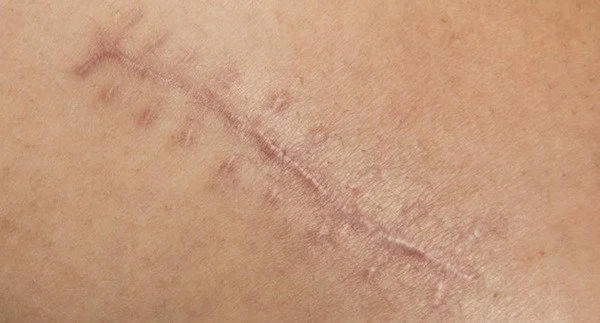A scar is formed when the skin integrity is disrupted for any reason such as trauma or surgery.
The resulting wound can be closed with stitches, or it can be closed by itself with dressings, or it can be closed by transferring tissue to the wound area with different techniques.
Regardless of the reason or method used to close the wound, a repair process begins in the repair area. It takes 1-2 years for the scar to take its final form. Over time, the scar turns into skin color. The hardness felt at the beginning softens and becomes more regular, but a scar, good or bad, always remains.
When a scar forms, it should be known that the scar will change over time and one should be patient. It is useful to be under the control of a plastic surgeon during the waiting period.
Correcting scars is an important issue in aesthetic surgery, many different methods are used to achieve a more aesthetic appearance.
What Causes Scars?
Accident and injury
Scars caused by surgery
Burn
Infection
Bite marks
Scars caused by acne and post-acne
Scars caused by chickenpox and similar diseases
How is Scar Treatment Done?
Scar treatment varies depending on the type of wound (burn scar, stitch scar, etc.). Among surgical and scar treatment methods, different methods such as sanding, balloon method or laser scar treatment stand out. You can find details about scar treatment methods below.
Scar Treatment Methods
Doing nothing: It is not yet possible to completely remove a scar and give it an uninjured appearance. Sometimes, it is possible to make the scar worse while trying to cover it. Therefore, it is important not to do everything recommended and listen to the recommendations of experienced plastic surgeons.
Completely removing the scar and stitching it again: The scar is completely removed from the healthy edges and stitched again using a more appropriate surgical technique and suture material.
Removing the scar and stitching it in a zig-zag manner: This is a frequently used method to change the direction of the wound and make it less noticeable.
Tissue expansion with the balloon method: A tissue expander balloon is surgically placed under the healthy skin adjacent to the wound. The inside of the tissue expander is initially empty. Over the weeks, the balloon is inflated by injecting salt water into it. The skin over it begins to expand along with the inflated balloon. When sufficient tissue expansion is achieved after a month or two, the wounded area is removed with a second surgery and the expanded normal skin adjacent to it is shifted to this area and the wound is closed.
Laser treatment of the scar: Scars can be treated with laser. It can be used to eliminate redness in the wound, and it can also be used to sand down irregularities on the wound in the late period.
Sanding and closure with thin skin patches: It is a method used in the treatment of scars where color differences are prominent, such as burn scar treatment involving large areas and scars caused by self-razoring. First, the skin is sanded, then thin skins taken from the thighs are transferred to these areas to obtain a surface more compatible with the normal tissue. We achieve successful results with the sanding and thin skin patch technique application, which is the first and only razor scar treatment method performed by me in the world.
Problems Caused by Scars
The color of the scar may differ from the color of the surrounding healthy skin.
While the wound is initially a thin line, the scar may widen over time.
The scar and stitch marks around it may remain visible along the incision line.
The wound area may be raised from the ground, more pinkish purple, hard, itchy, and even painful.
While it is a small scar at the beginning, it may swell and progress towards the surrounding tissue over months.
It can disrupt natural contours and restrict joint movements in areas such as lips, nose wings, ears, eyelids, arms, and palms.
Wound Repair Technique
This issue, which is the responsibility of plastic surgeons, is one of the important factors determining the scar, but it is not the only factor.
When repairing a wound, “atraumatic” methods should be used to cause the least damage to the cells. The layers under the skin should be repaired appropriately, dead tissue and dead space should not be left, and tension should be avoided.
In injuries where there is tissue loss, sewing the wound edges together tightly is an invitation to a bad scar.

